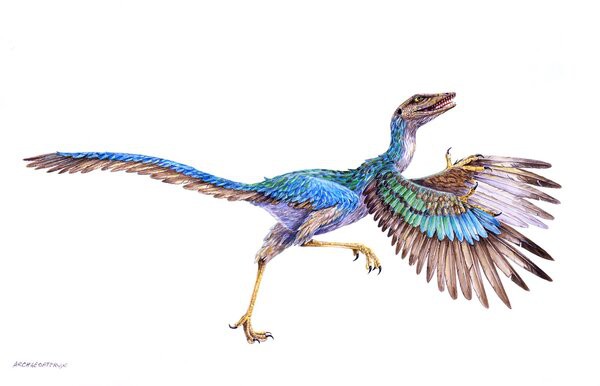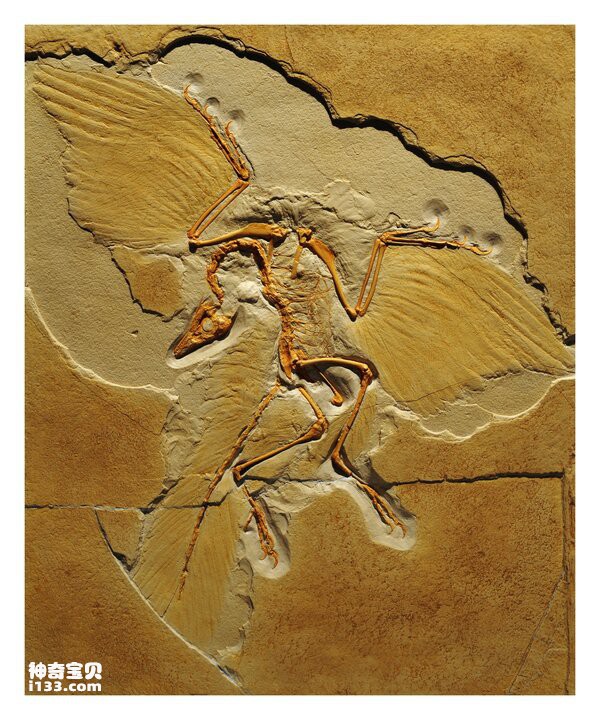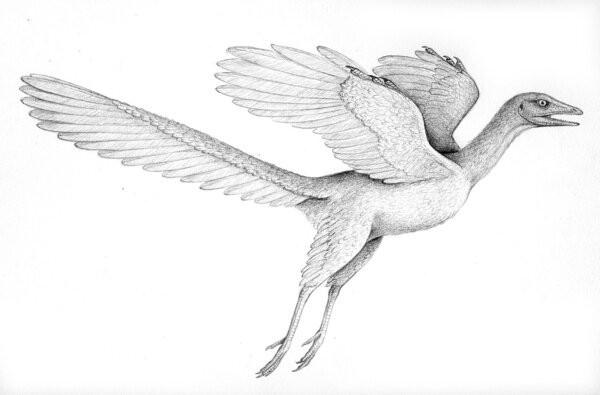Many features of early and modern birds first appeared in theropod dinosaurs. Feathers, wishbones, modified "flapping" forelimbs, and hollow bones were found in Coelurosaurus.

Coelurosaurs are theropod dinosaurs that include Tyrannosaurus rex and Dromaeosaurus.
The latter includes members such as Bambiraptor and Velociraptor, which share a more recent common ancestor with birds. Considering who came first, maybe we should stop describing dinosaurs as having bird-like behavior and start thinking of birds as behaving like dinosaurs.
Meisaurus is a non-avian coelurosaur from China whose skeleton is preserved with its head "hidden" beneath its forelimbs. This posture is similar to the "sleeping" posture commonly used in modern birds. This inferred behavior strengthens the connection between non-avian dinosaurs and birds.
Examples of bird-like dinosaurs include:
Zu's tail-feathered bird. Fossils from China, Early Cretaceous, 130-122 million years ago. Classification: Theropods; Oviraptors. Uropterus means "tail feathers," referring to the tail feathers that this non-avian dinosaur had and may have been fanned out for display. The rest of the body is covered with short primitive feathers, with longer feathers on the arms and tail.
Original Sinosauropteryx. Fossils from China, Early Cretaceous, 130-122 million years ago. Classification: Theropods; Compsognathidae. The primitive Sinosauropteryx discovered in 1996 is one of the most important fossil discoveries of this century. It is the first non-avian dinosaur discovered with feather-like structures, providing further evidence of the connection between dinosaurs and birds. The shape of the melanosomes (tiny packets of pigment in cells) in its feathers suggests it has a ginger body and white and ginger stripes on its tail. Its name means "China's first reptilian wing".
Thousand-year-old Chinese bird dragon. Fossils from China, Early Cretaceous, 130-122 million years ago. Classification: Theropod; Dromaeosauridae. Sinornithosaurus may have adapted to jumping. Its stiff tail acts as a counterweight, allowing precise positioning and release of its powerful claws. It's hard to say whether this helps attack prey or jump between branches. Sinornithosaurus is one of the earliest feathered dinosaurs discovered.

Although it is generally believed that a small group of theropod dinosaurs evolved birds, finding feathered dinosaurs in the fossil record that predates the earliest known bird, Archaeopteryx (150myo), has proven elusive. It wasn't until 2009 that Anchiornis huxleyi was discovered. Found in China and dating from 161 to 151 million years ago, this species has well-developed feathers on its limbs. This was followed by the announcement of another stunning new feathered dinosaur, Haplocheirus sollers, also from China and dating back about 160 million years. Mononychus was a species of Avarasaurus, a group of dinosaurs that were once thought to be flightless birds, but lacked the bird-like features found in later Avarasaurus, such as fused carpal bones and pubis backward.
Modern birds, early birds, and coelurosaur dinosaurs share many physical characteristics:
feather
hollow thin-walled bone
Wishbone
Modified shoulders and forelimbs allow hands to be folded over the lower arms
Modified wrist (half-lunar carpal bone).

animal tags: birds dinosaurs theropods
We created this article in conjunction with AI technology, then made sure it was fact-checked and edited by a Animals Top editor.